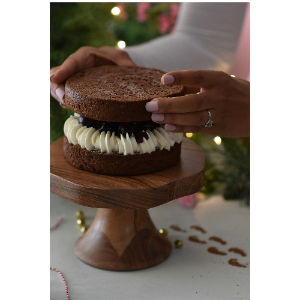Past Simple (Passive Form): How to Use + Example Sentence
- Rose Sensei
- Sep 16, 2022
- 6 min read
Updated: Jan 8
1. What is the Past Simple Passive?
Form - (was / were + past participle)
e.g. was helped, were carried, was told, etc.
2. When do we use the Passive form - Example Situation
We use the Passive form when we:
- want to focus on result of the action not who did it,
- do not know who did the action,
- do not need to mention who / it's not necessary.
Read the short story below. As you read, try to identify examples of the Past
Simple Passive.
Check out the YouTube video:

In a quiet town by the sea, an old art gallery was hidden away on a narrow street.
The gallery was known for its collection of rare and beautiful paintings, but there was one painting that was always talked about more than the others.
It was called "The Midnight Sun," and it was painted by a famous artist many years ago.
One day, the gallery opened as usual, but something strange was discovered. The painting was gone! The alarm was not triggered, and the doors were locked, so no one could understand how it had been stolen.
Immediately, the police were called, and an investigation was started. Fingerprints were taken, and the gallery was carefully examined, but no clues were found.
The whole town was shocked by the news, and people were afraid that "The

Midnight Sun" would never be seen again.
Days passed, and rumours spread. Some said the painting was sold on the black market, while others believed it was hidden in a secret location.
However, after weeks of searching, the painting was unexpectedly returned. It was found in a small box, wrapped in an old cloth, and left at the gallery's doorstep. No one knew who had taken it or why it had been brought back.
The mystery of "The Midnight Sun" was never solved, but the painting was once again displayed in the gallery, where it was admired by all who visited.
This story uses the Past Simple Passive to emphasise the actions that happened to the painting without focusing on who performed the actions, which is typical for stories involving mysteries or events where the subject is unknown or unimportant.
Examples of Past Simple Passive from the story:
was hidden
was known
was (always) talked
was called
was painted
was discovered
was gone
was not triggered
were locked
were called
was started
were taken
was (carefully) examined
were found
was sold
was hidden
was (unexpectedly) returned
was found
was (never) solved
was (once again) displayed
was admired
4. How to use the Past Simple (Passive Form) - Example Sentence
1. 'Sunflowers' was painted by Van Gogh.
2. The criminal was arrested by the police last night.
3. 'Norwegian Wood' was written by Haruki Murakami.
4. These cookies weren't made by Kate.
5. Were these instructions given by our big boss?
6. The dog was run over by a car.
7. When was the bicycle stolen?
(Note: we use 'by" + 'person' who did the action)
5. How do we form a Past Simple Passive ?
i) How to form the Past Simple Passive (Positive):
i. (positive)
- was / were + past participle + (by)
e.g. see
- I was seen (by)
- you / we / they / were seen (by)
- he / she / it was seen (by)
ii. (negative) + short form
- was not / were not + past participle + (by)
- I was not (wasn't) seen (by)
- you / we / they / were not (weren't) seen (by)
- he / she / it was not (wasn't) seen (by)
iii. Yes / No Questions, Short Answers
- Was I seen ...?
- Were you / we / they seen ...?
- Was he / she / it seen ...?
iv. Short Answers (positive) & (negative)
- Yes, I was.
- Yes, you / we / they were.
- Yes, he / she /it was.
- No, I was not (wasn't).
- No, you / we / they were not (weren't).
- No, he / she /it was not (wasn't).
iii) Past Simple Passive - (wh-Questions)
- Wh-Q + was / were + subject + past participle
Who
When
Where was / were + subject + past participle ...?
How
What
Quick Recap!
6. Why do we use the Past Simple Passive - Example Sentence
We use Passive form when we want to focus :
(a) on the result of an action and not the person / thing that did the action.
i. Past Simple (active)
Here, we focus on the 'person' (baker of the cake):
e.g. Leila baked the chocolate cake.

| |
(Subject) (object)
ii) Passive Past Simple
- Here, we focus on the 'cake'
(subject)
|
e.g. The chocolate cake was baked by Leila.
|
(object)
(Note: we use 'by" + 'person' who did the action)
(b) We do not know who did the action:
e.g. The houses were damaged in the typhoon.
(c) We do not need to mention who / it's not necessary:
e.g. The soldiers were killed in battle.
7. Compare Passive Past Simple vs Past Simple - Example Sentence

Note!
the position of the date/year can be:
i. in the middle,
ii. at the beginning*
ii. at the end
i. Singapore was founded in 1819 by Sir Stamford Raffles.
ii. In 1819, Singapore was founded by Sir Stamford Raffles.
iii. Singapore was founded by Sir Stamford Raffles in 1819.
> (Past Simple) - Sir Stamford Raffles founded Singapore in 1819.
iv. The Batman trilogy was directed by Christopher Nolan.
> (Past Simple) - Christopher Nolan directed the Batman trilogy.
Vocabulary Check!
trilogy - meaning: a series of 3 movies with the same characters & subject
v. One of my bags was stolen at the marketplace.
> (Past Simple) - Someone stole one of my bags at the marketplace.
vi) The wedding table was beautifully decorated.
> (Past Simple) - The wedding planner decorated the table beautifully.

vii. Cheryl's dad was hospitalised for 2 days.
(not necessary to say "by the doctor")
viii. The injured cyclist was taken to hospital. (by the ambulance)
> (Past Simple) - The ambulance took the injured cyclist to hospital.
Grammar Learning Tip!
We use the Passive Form quite a lot in real life as we may want to focus on different things or which fact is more important - the person or the action

ix. This bracelet was given to me by my husband.
> (Past Simple) - My husband gave me this bracelet.
English Learning Tip!
When practising or reviewing English grammar on your own, you may want to use personal experience in your everyday situation to make your own sentences.. For example you may be drinking coffee and thinking... This coffee is made from top quality Arabica beans. It is served in a 100% recyclable cup. ;-)
8. The Passive Past Simple - Example Sentence
Nami works at a beautiful village shop near the mountains.
She's telling the police what she found when she reported for work this morning:
i. The main glass door was shattered.
ii. The floor near the entrance was covered by broken glass everywhere.
iii. The safe's door was left open.
iv. Cash was stolen. Some of the items in the shop were taken too.
v. A pair of blood stained white gloves were found near the pantry.
vi. The shop's bicycle was gone.
vii. She was also informed by the village fruit seller that 2 men on a bicycle were seen speeding towards the pier.
9. Time for your practice.
Change the following active sentences into the Passive Form.
1. Mika did the housework yesterday.
Answer : The housework was done by Mika yesterday.

She:
i. polished the mirror
ii. scrubbed the sink
iii. wiped the countertop
iv. washed the toilet
v. mopped the floor
vi. dusted the shelves
Answer:
The mirror was polished.
The sink ...
Final Recap!
We use the Passive Form when we:
- want to focus on the result & not who did the action,
- don't know who did it,
- not necessary to mention who did it.
I hope you feel more confident about how to use the Passive Past Simple form in your everyday English.
Thanks so much for reading & Happy Learning!
Any Questions? Ask us anything! Contact us on the form below.



תגובות